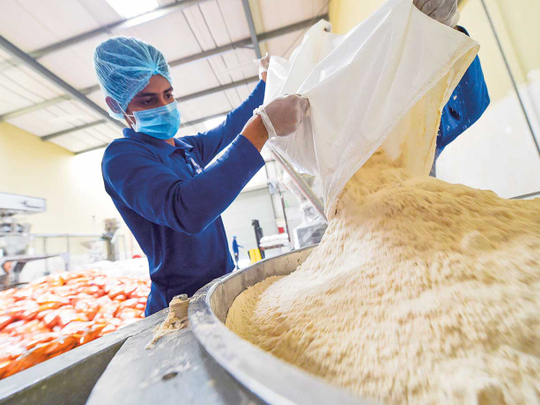
Dubai: After enduring its worst year ever, the UAE’s multi-billion dirham foodstuffs trading sector is starting to cook up some sort of recovery. More to the point, there has been some respite in recent weeks of trading firms going bust or their owners having to skip the country to escape paying off their debt calls.
“The most encouraging aspect is that sector-wide margins are improving after falling below cost last year,” said Dhananjay Datar, Managing Director of Al Adil Trading, which operates both in the wholesale and retail spaces. “It was the deterioration in operating margins that led so many traders to close shop in 2015 — I would put that number at about 30 businesses.
“They had overstocked on multiple food commodities expecting demand from some of the neighbouring markets to come through in a big way. That never happened and the only way they could liquidate those stocks was to flood the local market. They were trying to recover whatever they could selling at such low prices rather than wait and see their perishable stocks go bad.”
Two other factors are helping shore up margins in the trade — the strength of the dollar translates into lower import costs. Plus, the steep decline in freight costs — according to Datar, from $250(Dh917.5) a TEU (20-foot equivalent) to $50 — is also translating into the traders’ favour.
But the legacy of those businesses that went bust and their unpaid loans to banks still casts one long shadow over the local trading sector as a whole. Sure, there are ongoing moves by the banking sector to restructure these debts and thus ensure more small and medium sized enterprises will not get pushed to the brink. But remedial actions need to come in sooner, trading sources say.
“In many ways, the crisis also had its origin in banks either stopping their credit facilities to the sector or reducing their exposures drastically,” said Datar. “Even those facilities offered on a trade-to-trader basis was cut down, and which directly led to a spiralling of the cashflow problem.”
According to Vikram Venkataraman, Managing Director of the consultancy Vianta Advisors and an ex-banker, the closures were not “inexplicable”.
“Over the past five-six years, for some reason, foodstuffs became one of the “preferred” sectors for banks,” he said. “This resulted in aggressive lending to the trade, unwarranted leniency, relaxation in lending norms and so on. Second, unscrupulous businessmen figured all this out fairly quickly and concluded that it was easy to secure cheap and plentiful funding from banks using nefarious means.
“So they did exactly that, resulting in the over-exposure to the industry. Hence, when a few foodstuff borrowers went belly up, a domino effect followed.
“The first dominos fell due to two reasons — genuine business issues faced by foodstuff borrowers (receivables stuck in Africa was one) and, second, bank credit diverted from the trade to long term/non-business uses. This resulted in delinquencies as these “end-uses” were either not liquid to come back into the system and/or went bad.
“Examples of funds diversions are monies invested in real estate, into other businesses in the form of equity, or used for onward lending to other businesses and so on.”
Also, “The collapse of some commodity prices was in no small measure a significant contributor. But in my book, it was an over-leveraged sector with a mind-bogglingly enormous scale of cooking the books that resulted in this “sub-prime” crisis.”
And, as Venkataraman adds pointedly, the situation could see a repeat “this year as well in other sectors”.












